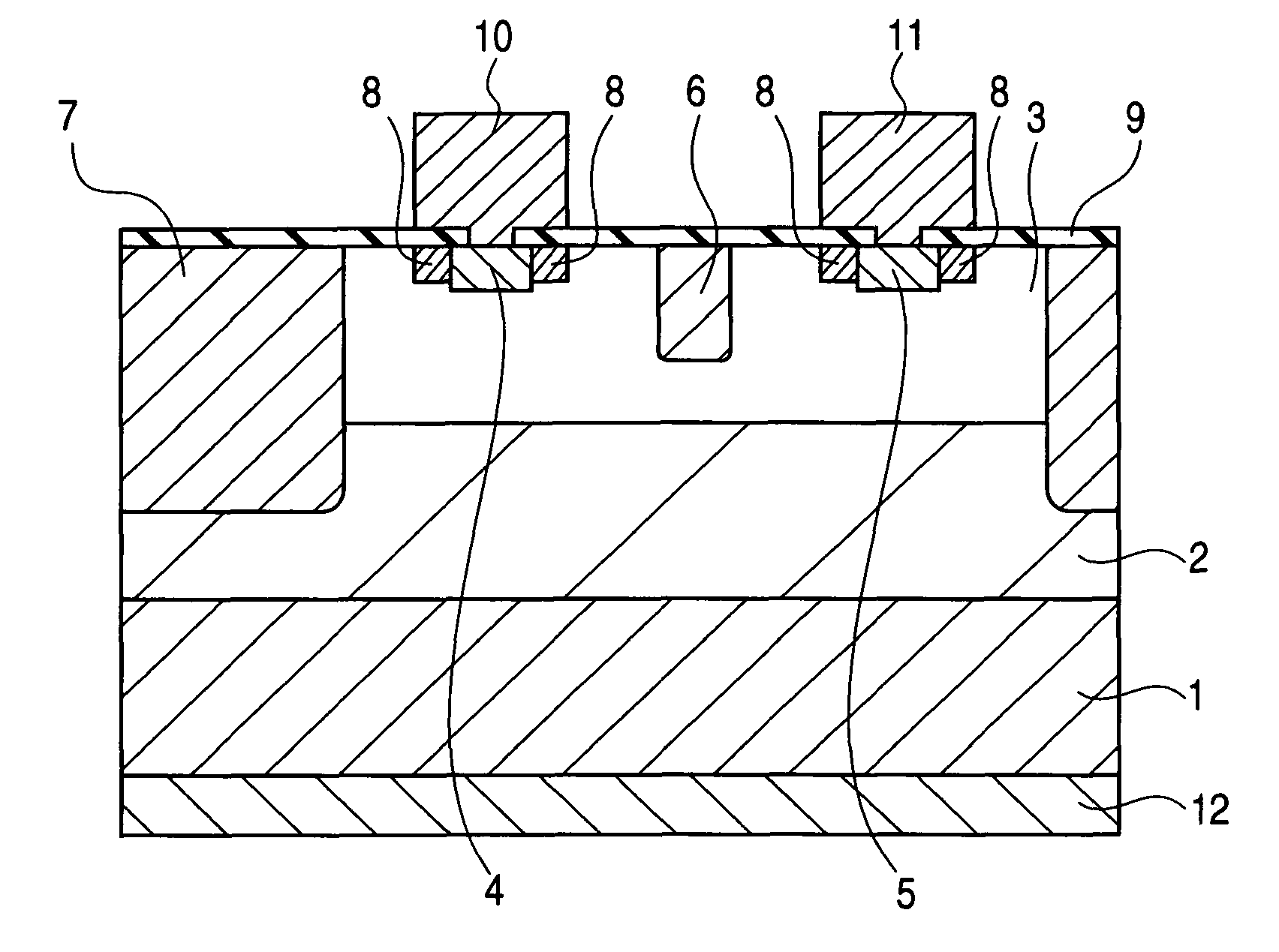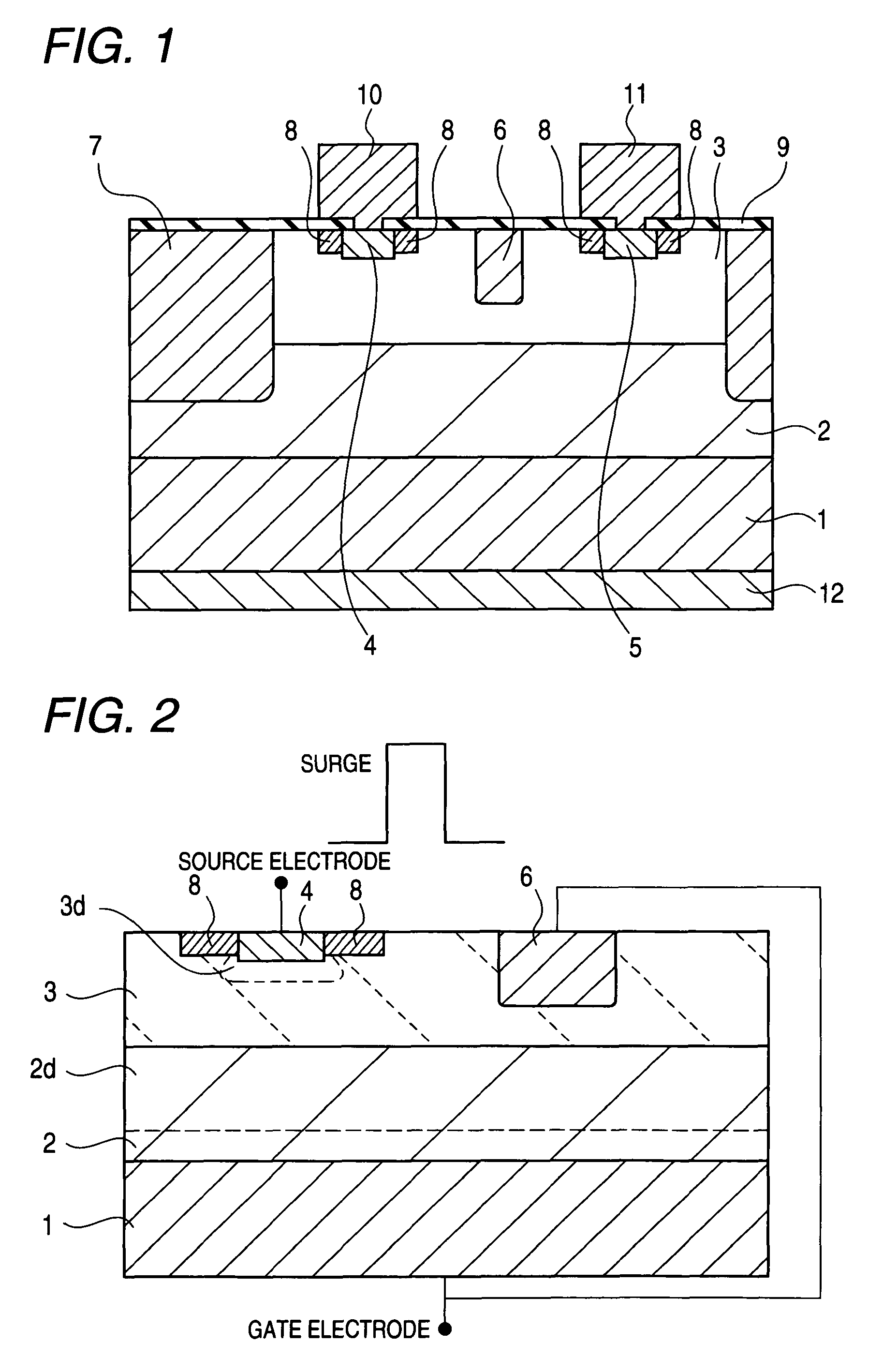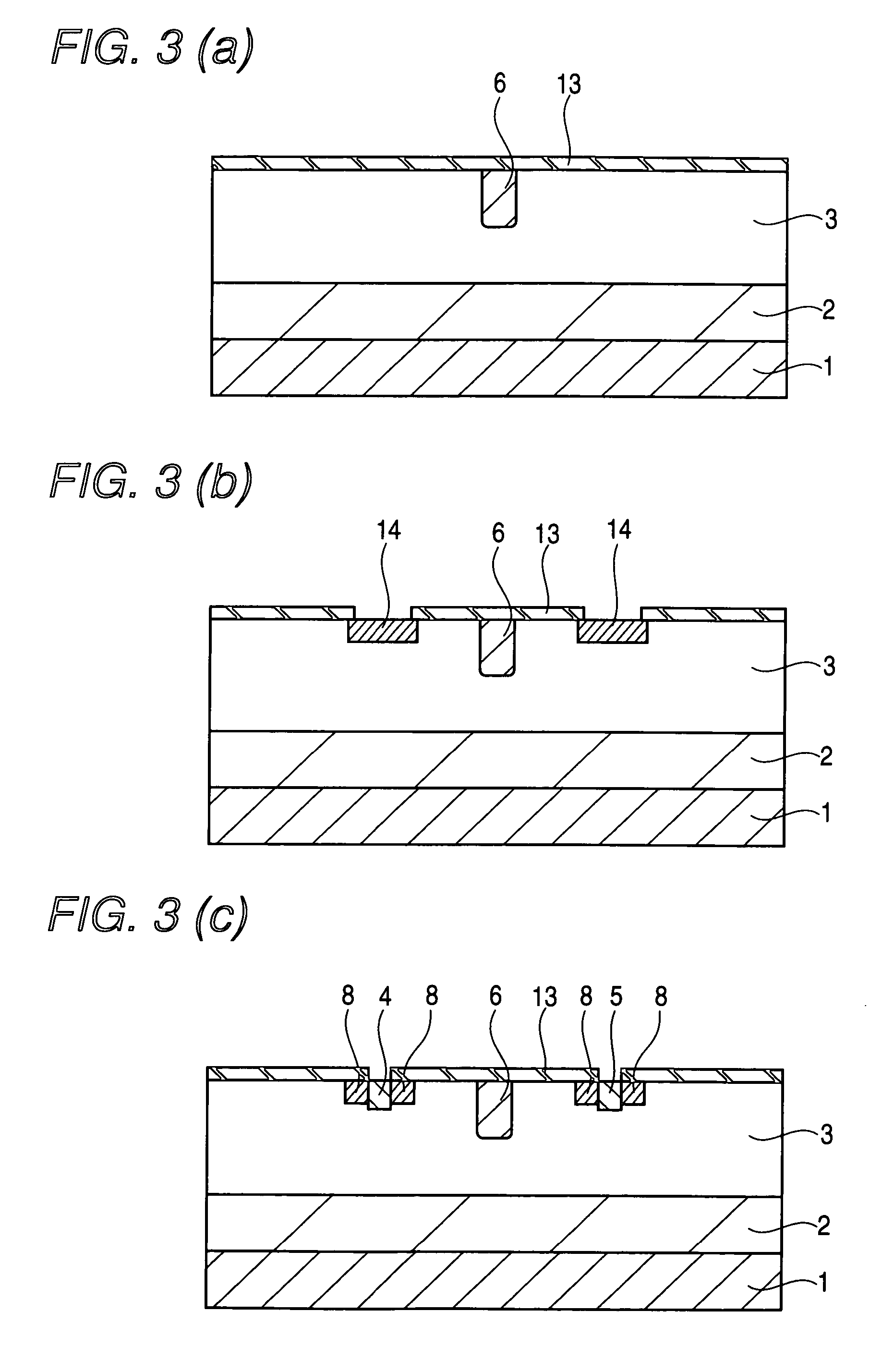Semiconductor device including a JFET having a short-circuit preventing layer
a short-circuit prevention and semiconductor technology, applied in semiconductor devices, transistors, electrical devices, etc., can solve problems such as electrical rupture with some frequency, and achieve the effect of increasing the density of the devi
- Summary
- Abstract
- Description
- Claims
- Application Information
AI Technical Summary
Benefits of technology
Problems solved by technology
Method used
Image
Examples
first embodiment
of the Invention
[0040]FIG. 1 is a cross-sectional view showing the basic structure of J-FET of the first embodiment of the invention. In the drawing, the same parts as those described in the section of the related art are designated by the same reference numerals as therein. This embodiment is characterized in that a short-circuit preventing layer 8 that comprises a diffusion layer of a reverse conduction type is formed around a source diffusion layer 4 and a drain diffusion layer 5 to be in contact with the side walls thereof. In FIG. 1, a P-type epitaxial layer 2 having an impurity concentration of 1×1015 cm−3 and a thickness of 10 μm is formed on a P++-conductive substrate 1 having an impurity concentration of 1020 cm−3 or so; and an N-type epitaxial layer 3 having an impurity concentration of 5×1015 cm−3 and a thickness of 5 μm is formed thereon. The P-type epitaxial layer 2 is formed for relaxing the auto-doping from the P++-conductive substrate 1.
[0041]In the N-type epitaxial ...
second embodiment
of the Invention
[0057]FIG. 8 is a cross-sectional view showing the basic structure of J-FET of the second embodiment of the invention. Different from the structure of the first embodiment mentioned above, this structure is characterized in that the short-circuit preventing layer 8 is provided between the source diffusion layer 4 or the drain diffusion layer 5 and the gate diffusion layer 6, spaced a little from the source diffusion layer 4 or the drain diffusion layer 5 not in contact with it.
[0058]This embodiment is described briefly hereinunder with reference to FIG. 8. The same parts as those described in the first embodiment are designated by the same reference numerals as therein. In FIG. 8, a P-type epitaxial layer 2 and an N-type epitaxial layer 3 are formed on a P++-conductive substrate 1. In the N-type epitaxial layer 3, formed are N+-conductive source diffusion layer 4 and drain diffusion layer 5, and P+-conductive gate diffusion layer 6. As in FIG. 8, a short-circuit prev...
third embodiment
of the Invention
[0061]FIG. 9 is a cross-sectional view showing the basic structure of J-FET of the third embodiment of the invention. Different from the structures of the first and second embodiments mentioned above, this structure is characterized in that a short-circuit preventing layer 8n is formed in contact with the side walls of the source diffusion layer 4 or the drain diffusion layer 5, and it is a diffusion layer of the same conduction type as that of the source diffusion layer 4 and the drain diffusion layer 5.
[0062]This embodiment is described briefly hereinunder with reference to FIG. 9. The same parts as those described in the first embodiment are designated by the same reference numerals as therein. In FIG. 9, a P-type epitaxial layer 2 and an N-type epitaxial layer 3 are formed on a P++-conductive substrate 1. In the N-type epitaxial layer 3, formed are N+-conductive source diffusion layer 4 and drain diffusion layer 5, and a P+-conductive gate diffusion layer 6. As i...
PUM
 Login to View More
Login to View More Abstract
Description
Claims
Application Information
 Login to View More
Login to View More - R&D
- Intellectual Property
- Life Sciences
- Materials
- Tech Scout
- Unparalleled Data Quality
- Higher Quality Content
- 60% Fewer Hallucinations
Browse by: Latest US Patents, China's latest patents, Technical Efficacy Thesaurus, Application Domain, Technology Topic, Popular Technical Reports.
© 2025 PatSnap. All rights reserved.Legal|Privacy policy|Modern Slavery Act Transparency Statement|Sitemap|About US| Contact US: help@patsnap.com



